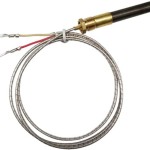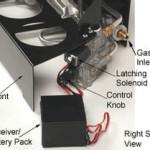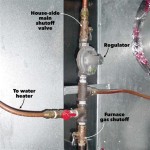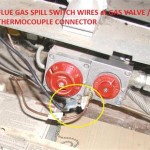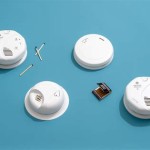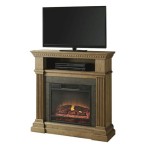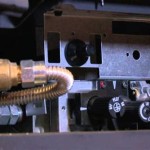Fireplace Looking Heaters: Aesthetics and Functionality Combined
Fireplace looking heaters represent a growing segment of the home heating market, driven by a desire to combine the visual appeal of a traditional fireplace with the convenience and efficiency of modern electric heating technology. These appliances offer a practical solution for supplemental heating while simultaneously enhancing the ambiance of a room. Understanding the various types, features, and considerations involved in selecting a fireplace looking heater is crucial for making an informed purchase.
Types of Fireplace Looking Heaters
Fireplace looking heaters encompass a range of designs and heating technologies. One can broadly categorize them based on their heating mechanism and mounting style:
Electric Fireplace Inserts: These units are designed to be inserted into existing fireplace openings. They replace the need for wood or gas burning and provide a clean, efficient heat source. Electric fireplace inserts often feature realistic flame effects and adjustable heat settings.
Electric Fireplace Mantels: These are complete units consisting of an electric fireplace insert surrounded by a decorative mantel. The mantel can be constructed from various materials, including wood, stone, and composite blends, offering a wide range of aesthetic options to match different interior design styles.
Freestanding Electric Fireplaces: These units are portable and can be placed virtually anywhere in a room. Freestanding models typically feature a self-contained electric fireplace unit with a base or legs. They offer flexibility in placement and are suitable for smaller spaces or rooms where a permanent installation is not desired.
Wall-Mounted Electric Fireplaces: These heaters are designed to be mounted directly onto a wall, saving floor space. Wall-mounted models often have a sleek, modern design and can serve as a focal point in a room. They are relatively easy to install and can be a good option for apartments or homes with limited space.
Electric Stoves: Mimicking the appearance of traditional wood-burning stoves, electric stoves offer a vintage or rustic aesthetic. They typically feature a cast-iron or steel exterior and a glowing "coal bed" effect. Electric stoves are often more compact than other types of fireplace looking heaters, making them suitable for smaller rooms.
The underlying heating technology in these fireplaces typically utilizes either resistance heating or infrared heating. Resistance heating involves passing electricity through a heating element, which then radiates heat into the room. Infrared heating, on the other hand, uses infrared lamps to directly heat objects and people in the room, rather than heating the air itself. Each technology has its own advantages and disadvantages in terms of efficiency and heating characteristics.
Key Features and Functionality
Modern fireplace looking heaters offer a variety of features designed to enhance both their functionality and aesthetic appeal. Considering these features is essential when choosing a heater that meets individual needs and preferences.
Flame Effects: The realism of the flame effect is a significant factor for many buyers. Manufacturers employ various technologies, such as LEDs and holographic projections, to create realistic and customizable flame effects. Some models offer adjustable flame brightness, color, and speed, allowing users to tailor the appearance to their liking. The best flame effects provide a convincing illusion of a real fire, enhancing the overall ambiance of the room.
Heat Output and Control: The heat output of a fireplace looking heater is measured in British Thermal Units (BTUs) or watts. The appropriate heat output depends on the size of the room being heated. Many models offer adjustable heat settings, allowing users to control the temperature and energy consumption. Some models also feature a thermostat, which automatically maintains a set temperature.
Remote Control Operation: Many modern fireplace looking heaters come with a remote control, allowing users to adjust the flame effects, heat settings, and other features from a distance. Remote control operation adds convenience and allows for easy adjustments without having to physically approach the unit.
Timer Function: A timer function allows users to set the heater to turn on or off automatically at specific times. This can be useful for preheating a room or for ensuring that the heater does not run unnecessarily overnight or when the room is unoccupied. The timer feature contributes to energy efficiency and convenience.
Safety Features: Safety is a paramount consideration when selecting any heating appliance. Fireplace looking heaters should include safety features such as overheat protection, which automatically shuts off the heater if it reaches an unsafe temperature. Some models also feature a cool-touch exterior, preventing accidental burns.
Zone Heating Capabilities: Fireplace looking heaters are often used for zone heating, which involves heating only the occupied areas of a home. This can be more energy-efficient than heating the entire house, especially in larger homes or during shoulder seasons when full central heating is not required.
Sound Effects: Some higher-end models include sound effects that mimic the crackling of a real fire. These sound effects can further enhance the realism and ambiance of the fireplace.
LED Lighting: Utilizing LED lighting for both the flame effect and any accent lighting within the fireplace offers energy efficiency and longevity. LEDs consume significantly less power than traditional incandescent bulbs and have a much longer lifespan, reducing the need for frequent replacements.
Considerations When Choosing a Fireplace Looking Heater
Selecting the right fireplace looking heater requires careful consideration of several factors, including room size, heating needs, aesthetic preferences, and budget.
Room Size and Heating Requirements: The size of the room to be heated is a primary factor in determining the appropriate heat output. A larger room will require a more powerful heater to effectively raise the temperature. Manufacturers often provide guidelines on the recommended room size for each model.
Placement and Installation: The placement of the heater will influence the type of model chosen. Freestanding models offer the most flexibility, while wall-mounted or insert models require more planning and potentially professional installation. The availability of an electrical outlet near the desired location is also a key consideration.
Aesthetic Preferences: Fireplace looking heaters are available in a wide range of styles, from traditional to modern. Choosing a model that complements the existing decor of the room is essential. Consider the color, materials, and overall design of the heater to ensure it integrates seamlessly into the space.
Energy Efficiency and Operating Costs: While electric fireplaces are generally more energy-efficient than traditional wood-burning fireplaces, operating costs can still vary depending on the model and usage. Look for models with adjustable heat settings and a thermostat to minimize energy consumption. Consider the long-term operating costs when comparing different models.
Warranty and Customer Support: A reputable manufacturer will offer a warranty on their products, providing coverage against defects and malfunctions. Check the warranty terms and conditions before making a purchase. Also, consider the availability of customer support in case any issues arise after purchase.
Ventilation Requirements: Unlike gas or wood burning fireplaces, electric fireplace heaters do not require any ventilation. This makes them easier to install and eliminates the need for a chimney or flue. This feature also contributes to improved energy efficiency, as there is no loss of heated air through a vent.
Budget: The price of fireplace looking heaters can vary significantly depending on the type, features, and brand. Establish a budget before starting the shopping process and compare prices from different retailers. Consider the long-term value and operating costs when evaluating different options.
Local Regulations: While generally less subject to regulations than wood-burning or gas fireplaces, it is prudent to check local building codes and regulations regarding the installation and use of electric heating appliances. This can help avoid any potential issues or violations.
By carefully considering these factors, consumers can choose a fireplace looking heater that provides both warmth and aesthetic appeal, enhancing the comfort and enjoyment of their homes.

Whole Electric Fireplace Heaters Hvacdirect Com

Electric Fireplace Heater Are They Effective Types And Specs

Are Amish Fireplace Claims A Bunch Of Hot Air

Modern Flames Redstone 30 Inch Built In Electric Fireplace Insert Firebox Heater Rs 3021 Fireplaces Depot

Costway 18 Electric Fireplace Insert 5100 Btu Freestanding Heater With Remote Control Fp10185 The Home Depot

Lifesmart Lifepro 3 Element Portable Electric Infrared Fireplace Heaters Pair Target

Costway 5100 Btu 36 In Fireplace Recessed Ultra Thin Electric Wall Mounted Heater Furnace With Multicolor Flame Ghm0484 The Home Depot

Electric Fireplaces The Fireplace Experts Direct

Seizeen Electric Heaters For Inside 14 Small Space Heater Portable 1400w Fireplace With Virtual Flame 4777 Btus Home Room Com

ᑕ❶ᑐ Electric Fireplaces Vs Space Heaters Which One Is Safer
Related Posts

